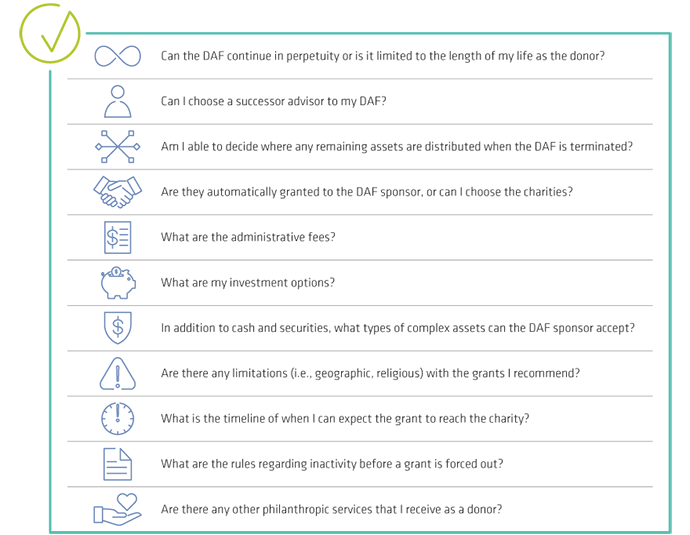Global stocks were up more than 25% last year, while US stocks rose even higher. And again this year, the markets have continued their ascent. In fact, the US market has delivered positive total returns in all but one year since 2009. As a result, many investors hold massive unrealized gains in their portfolios, which will be realized over time as portfolios are rebalanced and generate taxable gains. Fortunately, there are ways to reduce those gains, and potential taxes owed throughout the year.
Donating highly appreciated stock to a favorite charity is one way. Doing so allows the donor to support charity and avoid the payment of tax on the embedded capital gain. And, if the donor has itemized deductions that exceed the standard deduction, he or she may be able to fully deduct the value of the charitable gift. Many donors may know which charities they intend to support but may have questions as to which vehicle is the right fit for their philanthropic plan. One, the low-cost donor-advised fund (DAF) has become philanthropy’s fastest-growing vehicle in recent years. Here’s why.
There are five reasons why DAFs have risen in popularity:
- Low operating costs reduce the minimum endowment generally required
- Donors can contribute to a DAF as frequently as desired
- DAFs do not require a minimum annual grant
- Donors don’t have to administer the fund or satisfy reporting requirements
- The fund itself can be anonymous and grants can be made anonymously if desired
But there’s also a drawback—donors do not have complete control over grantmaking and investments, rather they play an advisory role. The DAF’s sponsoring entity (or administrator) handles check-writing, recordkeeping, and other administrative tasks, and grant disbursements.
A Good Fit?
Donors need to decide if a DAF is a giving vehicle that aligns with their philanthropic goals. Here are some key questions to ask a DAF sponsoring organization:

Philanthropic Success Starts with the X’s and O’s
For many, a successful wealth plan includes more than achieving financial triumph. It can also mean creating a philanthropic legacy. And figuring out a way to use charitable inclinations to lower tax liabilities is a win for all. But the devil is in the details. Take the time to ask these questions before deciding if a DAF is a good fit, to ensure that the wealth plan is set up for success.
- Shea McCabe, CFP®
- Associate Director—Wealth Strategies
- Jennifer Ostberg, CFP®, CAP®
- Director—Personal Philanthropy Services

